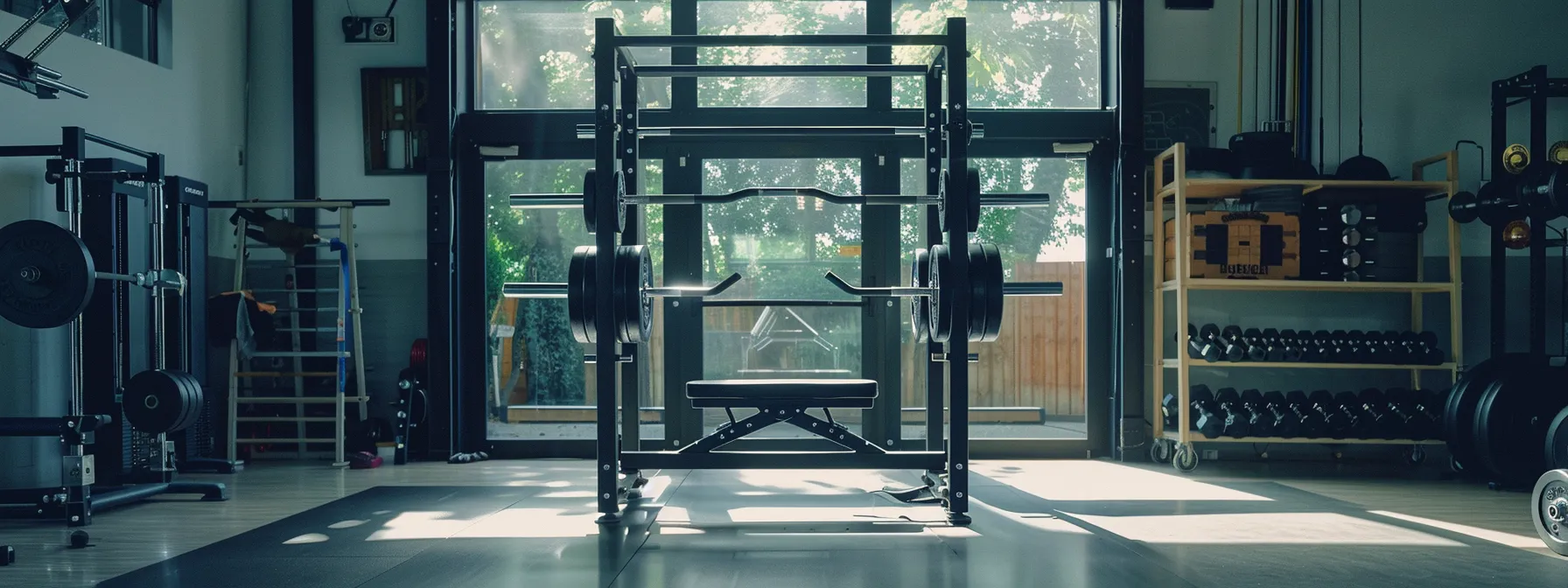Table Of Contents:
- Maximizing Your Workout: A Comprehensive Approach to Fitness
- Key Takeaways
- Crafting Your Custom Workout Plan for Maximum Results
- Assessing Your Fitness Level and Goals
- Identifying Exercises That Align With Your Objectives
- Setting Realistic Timelines and Milestones
- Incorporating Variety to Prevent Plateaus
- Adjusting Intensity Levels for Sustainable Progress
- Elevating Your Cardio Routine for Optimal Fitness
- Choosing the Right Type of Cardio Based on Your Fitness Level
- Integrating High-Intensity Interval Training (HIIT) for Fat Loss
- Balancing Low-Intensity Steady-State (LISS) for Endurance
- Using Tracking Tools to Measure Progress and Performance
- Listening to Your Body to Avoid Overtraining
- Strength Training Strategies to Build Muscle and Burn Fat
- Understanding the Basics of Muscle Hypertrophy
- Structuring Your Workout: Compound vs. Isolation Exercises
- The Importance of Rest and Recovery in Strength Training
- Progressive Overload Principle for Continuous Improvement
- Nutrition Tips for Maximizing Muscle Gain and Fat Loss
- Flexibility and Mobility Workouts to Enhance Performance
- Incorporating Dynamic Stretching Into Your Warm-Up Routine
- The Role of Static Stretching in Your Cool-Down Phase
- Utilizing Yoga and Pilates for Core Strength and Flexibility
- How Mobility Exercises Can Prevent Injuries and Improve Range of Motion
- Creating a Weekly Schedule That Includes Flexibility Training
- The Role of Nutrition in Maximizing Your Workout Outcomes
- Calculating Your Macro and Micronutrient Needs
- Pre and Post-Workout Nutrition for Energy and Recovery
- The Impact of Hydration on Performance and Health
- Identifying Supplements That Support Your Fitness Goals
- Meal Planning Tips for Busy Athletes
- Tracking Progress and Adjusting Your Fitness Plan
- Setting Up Effective Tracking Methods for Your Goals
- Analyzing Data: What to Look for Beyond the Scale
- When and How to Adjust Your Workout and Diet for Continued Growth
- Celebrating Milestones and Recalibrating Goals
- Staying Motivated Through Community and Personal Rewards
- Conclusion
Maximizing Your Workout: A Comprehensive Approach to Fitness
Welcome to the dynamic world of fitness, where a 24-hour gym availability and a balanced diet play pivotal roles in sculpting your desired physique and boosting overall health. Intricacies abound, from crafting a tailored workout regimen that aligns with your goals to integrating nutritional strategies that fuel your body optimally. It’s not merely about lifting weights; it’s about weaving in cardio, interval training to maximize fat burn, and comprehensive movements to prevent injury and promote wellness. In this article, I outline a strategic approach to enhance your exercise routine and dietary habits, completely transforming how you view and manage your fitness journey. Keep reading to discover actionable tips and tactics that will take your workout efforts to the next level.
Key Takeaways
- Setting specific fitness goals directs a personalized workout plan
- Variety in exercise routines helps avoid plateaus and engage different muscles
- Proper nutrition and hydration are critical for supporting intense workouts and recovery
- Monitoring progress with technology and adjusting strategies ensures continuous improvement
- Celebrating milestones and engaging with a fitness community boost motivation and commitment
Crafting Your Custom Workout Plan for Maximum Results

Your journey to a tailored fitness regimen that maximizes muscle gain, trims the waistline, or increases leg strength begins with a thorough evaluation of where you stand health-wise and what you hope to achieve. Picking the right exercises necessitates an understanding of how each movement will contribute to your goals, whether that’s building mass, enhancing flexibility, or alleviating stress. Success hinges on not only the adoption of a clear policy for progress but also on setting feasible targets and recognizing milestones along the way. To dodge the dreaded plateaus, a strategy that infuses variety into your workouts is non-negotiable. Moreover, it’s vital to regularly fine-tune the intensity of your exercises, guaranteeing that your body continues to improve without the risk of burnout or injury.
Assessing Your Fitness Level and Goals
Knowing where to start on your fitness journey begins with an honest assessment of your physical condition: acknowledging weight management issues, areas prone to inflammation, or even evaluating the strength in your shoulders. Determining your current fitness level requires a truthful examination of your body’s capabilities and a commitment to addressing areas of weakness without charging a fee to your wellbeing.
Create space in your assessment for both immediate aims, such as shedding excess fat, and long-term aspirations like improving overall body composition. Set specific, measurable objectives—your goals should define the trajectory of your personalized workout plan, inspiring actions that align with your health and fitness vision.
| Assessment Criteria | Current State | Short-Term Goals | Long-Term Aspirations |
|---|---|---|---|
| Weight and Body Fat | Define starting point | Lose excess fat | Achieve target body composition |
| Strength Levels | Evaluate areas like shoulders | Increase muscle mass and strength | Maintain and progress strength gains |
| Inflammation and Pain | Identify inflammation-prone areas | Reduce frequent inflammation | Enhance overall flexibility and reduce injury |
| Aerobic Capacity | Measure current endurance | Improve cardiovascular health | Maximize endurance and stamina |
Identifying Exercises That Align With Your Objectives
To align your fitness routine with your personal aims, the selection of exercises should be deliberate and focused. For instance, to enhance joint stability and prevent knee injuries, incorporating balance exercises can be as essential as scheduling regular massage sessions to support recovery. While considering cardiovascular activities to boost metabolism, it’s also critical to integrate weight-bearing exercises to strengthen bones, ensuring a comprehensive approach to your health.
| Objective | Exercise Category | Example Exercises |
|---|---|---|
| Knee Strength and Stability | Balance and Stability | Single-Leg Squats, Stability Ball Leg Curls |
| Recovery and Suppleness | Massage and Flexibility | Self-Myofascial Release, Stretching Routines |
| Metabolic Enhancement | Cardiovascular | High-Intensity Interval Training (HIIT), Cycling |
| Bone Density Improvement | Strength Training | Deadlifts, Overhead Presses |
Setting Realistic Timelines and Milestones
Embarking on a gym fit journey to bolster my health, I’ve learned the importance of setting timelines that reflect my aspirations without imposing undue pressure. Absorbing information from fitness apps on my iOS device helps to chart progress and adjust goals accordingly, ensuring they remain challenging yet achievable.
Incorporating Variety to Prevent Plateaus
To stave off the dreaded fitness plateau, incorporating a blend of exercises into my workout routine is critical. For instance, interspersing high-intensity squat sessions with cycling provides not only a welcome change in my physical recreation but also promotes different muscle engagement and cardiovascular benefits. The neurobiological effects of physical exercise are vast, so continually challenging my body with varied stimuli ensures I consistently progress toward my maxfit goals.
| Week | Focus | Variety Example | Expected Outcome |
|---|---|---|---|
| 1-4 | Leg Strength | Squats with Progressive Overload | Increased Muscle Power |
| 5-8 | Cardiovascular Endurance | Alternating HIIT and Long-Distance Cycling | Enhanced Stamina |
| 9-12 | Active Recovery | Yoga and Light Recreational Activities | Reduced Recovery Time |
Adjusting Intensity Levels for Sustainable Progress
Reflecting on my own regimen, I’ve noticed how crucial it is to tune the workout’s intensity, balancing the body’s VO2 max growth with considerations for mood and overall well-being. Too often, an overly enthusiastic start leads to burnout rather than sustained endurance. I recall one morning when my muscles were particularly sore, and yet, upon checking my email, I resolved to power through a planned bicycle ride; it turned out to be a mistake that taught me to listen more closely to my body.
| Week | Intensity Adjustment | Activity | Outcome |
|---|---|---|---|
| 1-2 | Moderate | Steady-State Cardio | Base Endurance Build-up |
| 3-4 | Increased | Intervals on Bicycle | Improved VO2 Max and Stamina |
| 5-6 | Reduced | Deload Week with Light Activities | Recovery and Mood Enhancement |
| 7-8 | Varied | Cross-Training | Comprehensive Fitness Gains |
Now that your custom workout plan is shaping up, it’s time to turn our attention to a pivotal component of fitness: your cardio routine. Prepare to maximize your endurance and push your limits as we refine and boost your cardio exercises for peak performance.
Elevating Your Cardio Routine for Optimal Fitness

Amidst my regimen, I have learned to optimize each cardio session to align with my physical capabilities and ambitions. Selecting the appropriate form of cardio, whether it’s the rhythm of swimming or the agility demanded by squash, hinges on a clear understanding of how each impacts my fitness levels. To adeptly shed unwanted body fat, I’ve woven High-Intensity Interval Training into my routine, juxtaposing these sessions with the slower pace of Low-Intensity Steady-State exercises to boost endurance. On my journey, sports medicine principles serve as a compass, guiding my injury prevention strategies even as I track my progress through a mobile app. Just as a chair supports weight, these tools support my fitness; and I am always mindful to heed my body’s signals to prevent the pitfalls of overtraining.
Choosing the Right Type of Cardio Based on Your Fitness Level
Selecting the appropriate cardio exercise is a nuanced decision that hinges on recognizing the demands different activities place on the body, especially when optimizing body composition. If my aim is to minimize the risk of lifestyle-related diseases, like cancer, my choices should reflect cardio activities that elevate heart rate sufficiently while being mindful of any past injuries, like a sprained ankle. For someone just starting their fitness journey, a fit box class might offer an energetic and scalable option, whereas a seasoned athlete might lean toward a more rigorous ‘b fit‘ bootcamp that pushes cardiovascular limits without overstraining specific joints.
| Type of Cardio | Suitable For | Intensity | Joint Impact |
|---|---|---|---|
| Fit Box Class | Beginners to Intermediate | Moderate | Low to Moderate |
| ‘B Fit’ Bootcamp | Intermediate to Advanced | High | Moderate to High |
| Steady-State Jogging | All Levels | Low to Moderate | Low |
| High-Intensity Interval Training (HIIT) | Advanced | Very High | High |
| Swimming | All Levels | Variable | Very Low |
Integrating High-Intensity Interval Training (HIIT) for Fat Loss
Incorporating High-Intensity Interval Training into my routine, I’ve witnessed a transformative change at the cellular level, with research suggesting accelerated fat loss and improved metabolic health. The controlled chaos of alternating intense exercise bursts with brief recovery periods at my local health club fits perfectly into the mosaic of my fitness strategy. Aligning with the terms of service at the club, I’ve harmonized the rigor of HIIT with quieter moments of meditation, creating a holistic fiit protocol that respects my body’s needs and amplifies my results.
Balancing Low-Intensity Steady-State (LISS) for Endurance
Incorporating Low-Intensity Steady-State exercise, or LISS, into my fitness protocol has been integral in constructing a robust foundation for enduring workouts. LISS activities, such as a leisurely flywheel class or a zumba session, cater to enhancing cardiovascular health while minimizing stress on skeletal muscle – an essential consideration for those managing diabetes as part of their lifestyle changes. It’s a strategic balance that affords me the stamina needed for daily endeavors while safeguarding my health.
| Exercise Type | Frequency | Duration | Primary Benefit |
|---|---|---|---|
| Flywheel | Twice a week | 45 minutes | Cardiorespiratory fitness, Leg endurance |
| Zumba | Once a week | 1 hour | Fat burning, Joyful activity |
Using Tracking Tools to Measure Progress and Performance
To keep a precise log of my advancements, I’ve adopted tools that track the minutiae of my fitness journey, from isometric exercise hold times to the rhythm of my breathing during an activity. The feedback from these resources is invaluable, offering me a granular view of my performance that even a telephone consultation with a coach can’t match. It’s not just about physical improvement; by understanding the impacts of exercise on my mental health, I’m able to make more informed decisions, leading to a more balanced and beneficial fitness routine.
Listening to Your Body to Avoid Overtraining
Admittedly, in my quest for peak physical condition, I’ve learned to interpret signals like persistent pain as my body’s way of cautioning against overexertion. A balanced approach, where the intensity of kettlebell swings syncs with adequate rest, proper nutrition, and prudent strength training, avoids counterproductive overtraining. Echoing the wisdom of sports medicine, I prioritize listening to these cues, ensuring that my drive for fitness doesn’t trespass into the realm of injury.
- Heed early signs of distress such as consistent pain or excessive fatigue.
- Balance intense kettlebell workouts with strategic rest periods to promote recovery.
- Adopt a comprehensive nutrition plan that supports my body’s needs.
- Engage in strength training that complements my body’s capabilities and recovery capacity.
- Consult with sports medicine professionals if pain persists or performance declines.
As we fine-tune our cardiovascular fitness, a robust approach beckons to further our physical prowess. Let’s shift our focus to strength training strategies that promise to sculpt muscle and incinerate fat.
Strength Training Strategies to Build Muscle and Burn Fat

Advancing my physical conditioning within the walls of the studio, where pilates and weight racks coexist, demands an informed approach to sculpting my physique. Understanding muscle hypertrophy is the cornerstone of this quest, appreciating how muscles grow and adapt under stress. In structuring my training, I align the powerful effects of compound exercises with the targeted impact of isolation movements, ensuring a comprehensive muscular stimulus. Recognizing the critical role of rest and recovery allows me to combat fatigue, stave off the risk of osteoporosis, and prime my body for subsequent sessions. Employing the progressive overload principle, I consistently challenge my muscles, fostering continuous improvement while the Mayo Clinic‘s research on nutrition provides a beacon for balancing my intake to fuel muscle gain and maximize fat loss. Each component synergistically feeds into a regimen that cultivates resilience, strength, and a well-rounded level of fitness.
Understanding the Basics of Muscle Hypertrophy
Grasping the essence of muscle hypertrophy is pivotal to any rigorous bodyfit strategy aimed at strengthening and enlarging muscle fibers. It’s a process underpinned by the response of muscle cells to controlled and targeted stress, leading to increased muscle mass over time. A keen awareness of one’s heart rate during workouts, a disciplined mind that’s attuned to the body’s cues, adequate sleep for repair, and a commitment to mitigating injury risk are all integral aspects of nurturing hypertrophy and achieving optimal gains.
Structuring Your Workout: Compound vs. Isolation Exercises
In shaping my routine to conform with current physical activity guidelines for Americans, I find it imperative to balance compound exercises with isolation movements. A deadlift with a dumbbell, for example, engages multiple muscle groups simultaneously, fostering an environment conducive to enhancing overall physical fitness and potentially regulating hormone levels that influence muscle growth. Meanwhile, isolation exercises target specific muscles, aiding in refining muscle definition and combatting obesity by increasing overall muscle mass which can boost resting metabolism.
The Importance of Rest and Recovery in Strength Training
In the midst of my strength training journey, I’ve observed that Canada‘s frigid climate often pushes me indoors, heightening the focus on my fitness endeavors. It’s during these concentrated periods of muscle exertion that I understand the quintessence of rest and recovery. These respites are more than just opportunities for my heart and circulatory system to recover; they are instrumental in achieving weight loss and cultivating the motivation to persevere in my regimen.
Progressive Overload Principle for Continuous Improvement
Adhering to the progressive overload principle, I routinely enhance the challenge my muscles face during workouts, mindful that an increase in aerobic exercise intensity can be as effective as the weights I lift. Whether I’m walking briskly or engaging in running, I implement incremental changes to my exercise routine, ensuring my body adapts and becomes more efficient, particularly beneficial for improving insulin sensitivity in individuals managing type 2 diabetes. The progressive overload method extends beyond strength training, encompassing a full range of motion and varied intensities to solidify gains and mitigate plateaus.
- Gradually increase the intensity of aerobic exercise activities.
- Incorporate walking at a brisk pace to improve cardiovascular health.
- Utilize running for enhanced aerobic capacity and insulin sensitivity.
- Ensure a comprehensive range of motion to foster joint health and flexibility.
- Adjust workout variables progressively to manage type 2 diabetes effectively.
Nutrition Tips for Maximizing Muscle Gain and Fat Loss
To complement my regimen of strength training, I’ve discovered the synergistic effect of integrating nutrition that feeds my muscles and shreds body fat, particularly following intense sessions of indoor cycling. With music fueling my rhythm, I turn to a blend of protein-packed foods and complex carbohydrates that replenish my body’s energy stores, driving muscle repair and growth while I cool down from the treadmill‘s demand. This deliberate approach to eating, cognizant of what my brain and perspiration signal, sustains my momentum and amplifies the impact of my workout efforts.
Strength training lays the foundation for a powerful physique; yet, it’s only one piece of the fitness puzzle. Integrating flexibility and mobility workouts takes your performance to new heights, ensuring every muscle gains the full benefit of your training efforts.
Flexibility and Mobility Workouts to Enhance Performance

In my routine, I’ve noticed the transformative impact that incorporating a range of flexibility and mobility exercises can have on fitness outcomes. Engaging a personal trainer at the gym has enlightened me on the need for dynamic stretching to prime my muscles before I engage in more strenuous activities. This segues into the pivotal role static stretching plays in my cool-down phase, facilitating a safe return to my resting state. As a resident of the United States, where various fitness methodologies are easily accessible, I’ve intertwined yoga and pilates to fortify my core strength and enhance my flexibility. Additionally, mobility exercises form a critical aspect of my regimen, acting as guardians against injuries and expanding my range of motion. This holistic perspective guides my weekly planning, ensuring that each dimension of flexibility training is allotted dedicated time, reflecting its significance in my broader fitness journey.
Incorporating Dynamic Stretching Into Your Warm-Up Routine
Dynamic stretching, which involves active movements that cause your muscles to stretch, has been a game-changer in preparing my body for exercise. This type of warm-up not only aids in elevating blood pressure gently but also primes my muscles for the weight-bearing exercises to come, significantly lowering the chances of injury. By incorporating movements that are specific to the exercises I will perform, I prepare my body functionally for what’s ahead, boosting my confidence as I transition into my one fitness plan.
Adopting dynamic stretching also addresses the consequences of a sedentary lifestyle, such as tight hips or hamstrings, which can impede performance. Through these stretches, I ensure my joints and muscles are ready for action, promoting a healthier blood flow and reducing the risks associated with high-intensity workouts:
- Enhanced muscle performance through thorough warm-up routines.
- Improved joint range of motion, optimizing exercise effectiveness.
- Increased blood flow, preparing the heart for elevated activity levels.
The Role of Static Stretching in Your Cool-Down Phase
Incorporating static stretching during my cool-down routine not only assists in gracefully transitioning my body back to a state of rest, but it also plays a critical role in disease prevention and health promotion. For instance, elongating muscle fibers post-workout can help manage stiffness and mobility issues often associated with arthritis. As I unwind from an intense session, I sometimes use a smartphone app linked to my Apple ID to guide my stretching routine, ensuring I cover all major muscle groups and enhance my long-term wellbeing.
Utilizing Yoga and Pilates for Core Strength and Flexibility
Intertwining yoga and pilates into my fitness repertoire has been pivotal for my core strength and flexibility, offering a stark contrast to the intensity of bodycombat or the discipline of a dance class. While my apple watch monitors my heart rate, these practices teach my body to move with precision and control, crucial for executing a flawless bench press or maintaining balance on one foot during challenging poses.
How Mobility Exercises Can Prevent Injuries and Improve Range of Motion
Integrating mobility exercises into my regimen has been a game-changer in my role as a gym pro; it enhances the fluidity of my joint movements and extends my overall range of motion. These exercises serve as a foundational complement to my usual routine, allowing me to approach the machine-based strength training and yoga with improved joint health and reduced injury risk. On days when I can’t make it to the gym, I turn to guided mobility routines on my iPhone that help maintain this crucial aspect of my fitness journey from anywhere.
Creating a Weekly Schedule That Includes Flexibility Training
Dedicating specific days to flexibility training within my weekly workout schedule has become a game-changer, enhancing my performance by promoting healthy blood circulation and increasing muscle pliability. After establishing my major fitness objectives, I pinpointed optimal time slots throughout the week, ensuring that these critical exercises were not overshadowed by other responsibilities:
- Tuesday evenings, following a light cardio session, to help ease my muscles into deeper stretches.
- Thursday mornings, as a refreshing start to the day, focusing on dynamic movements to awaken my body.
- Saturdays, integrating these practices after strength training, when my muscles are most pliable and the benefits of stretching can be maximized.
By consistently carving out time for flexibility work, I’ve noticed significant improvements not only in my range of motion but also in my overall physical performance, underscoring the importance of a well-rounded fitness regime.
Shifting gears from physical exertion, let’s address another cornerstone of peak performance — nutrition. A well-planned diet can dramatically amplify the benefits of your fitness routine, propelling you towards your goals.
The Role of Nutrition in Maximizing Your Workout Outcomes

Attaining peak physical condition extends well beyond the confines of the gym; it requires meticulous attention to nutrition, which fuels our bodies and aids in the recovery process. It’s an intricate dance of understanding the balance of proteins, fats, and carbohydrates—the macronutrients that comprise the bulk of our dietary intake—as well as the micronutrients that catalyze numerous biological reactions. Tailoring my eating habits to support my rigorous training schedule has become essential. I know firsthand the difference proper nutrition can make, providing me with the energy needed for my body to perform and recover effectively. Proper hydration too plays a pivotal role, influencing everything from workout performance to cognitive function. Additionally, navigating the vast ocean of dietary supplements is no simple feat; I meticulously research to discern what can genuinely complement my training and what’s merely noise in an over-saturated market. Meanwhile, I also strategize my meals around my demanding lifestyle, ensuring that even when time is scarce, my body isn’t shortchanged of the nutrients it requires to perform at its best.
Calculating Your Macro and Micronutrient Needs
Calculating macro and micronutrient needs is essential to fuel my workouts and optimize recovery. I take into account factors like my age, gender, activity level, and specific fitness goals to determine my daily requirements: a delicate balance of proteins for muscle repair, carbohydrates for energy, and fats for hormonal health, with an array of vitamins and minerals to support overall bodily functions.
| Nutrient | Daily Requirement | Role in Fitness | Sources |
|---|---|---|---|
| Protein | 1.2-2.0g/kg of body weight | Muscle repair and growth | Chicken, fish, tofu, legumes |
| Carbohydrates | 3-5g/kg of body weight | Energy for workout performance | Brown rice, quinoa, fruits, vegetables |
| Fats | 20-35% of total calories | Hormonal health and energy | Nuts, avocados, olive oil, fatty fish |
| Vitamins & Minerals | Varies by type | Metabolic functions and immunity | Leafy greens, berries, nuts, dairy |
Pre and Post-Workout Nutrition for Energy and Recovery
Timing and composition are critical when it comes to pre and post-workout meals; I always aim to consume easily digestible carbohydrates with a moderate amount of protein before my training to fuel my muscles, and I follow up with a meal rich in protein and complex carbohydrates afterward to facilitate recovery and muscle synthesis. It’s this strategic approach to nutrition that keeps my body energized throughout the workout and optimizes repair in the post-exercise window.
The Impact of Hydration on Performance and Health
Adequate hydration is the linchpin of peak athletic performance; it governs not only my stamina and strength but also cognitive clarity and coordination during workouts. Understanding that water assists in the transport of nutrients, ridding the body of waste, and maintaining core temperature has guided me to prioritize fluid intake before, during, and after exercise—this practice is fundamental to avoiding dehydration, which can severely diminish both physical capabilities and health.
Identifying Supplements That Support Your Fitness Goals
In discerning which supplements may align with my fitness objectives, I prioritize those backed by scientific evidence, like whey protein for its muscle repair benefits and creatine for enhanced strength during high-intensity workouts. I engage with professionals for customized recommendations, always mindful of the synergy between these supplements and whole foods in my diet, ensuring each capsule and powder serves a purpose in my regimen’s larger picture.
Meal Planning Tips for Busy Athletes
Efficiency is the cornerstone of meal planning for athletes with pressing schedules: I focus on preparing nutrient-dense meals in advance, ensuring I have easy access to the right foods at the right times. By dedicating a couple of hours on the weekend to batch-cook proteins, carbohydrates, and vegetables, I create a system that supports my dietary needs without compromising a busy calendar. This strategy eliminates the stress of daily meal decisions and keeps my nutrition on track:
| Day | Meal Prep Activity | Nutritional Focus |
|---|---|---|
| Sunday | Batch-cook grains: Brown rice, quinoa | Complex carbohydrates for energy |
| Sunday | Prepare proteins: Grilled chicken, baked tofu | Proteins for muscle repair |
| Wednesday | Midweek check: Restock fresh produce, snacks | Vitamins, minerals, and fiber |
| Daily | Assemble meals from prepped ingredients | Macronutrient balance for recovery |
Mastering the role of nutrition sets the stage for optimum physical performance. Let’s advance to the vital phase of monitoring progress and fine-tuning your fitness strategy.
Tracking Progress and Adjusting Your Fitness Plan

In my pursuit of peak physical fitness, vigilance in tracking progress and willingness to tweak my fitness plan have emerged as vital cornerstones. Establishing robust methods to monitor my achievements isn’t just about quantifying results; it’s also about gaining insights that guide my future strategies. By delving into the data—whether it’s performance metrics, body composition changes, or even fluctuations in mood and energy levels—I’m empowered to discern patterns that drive success beyond what the scale alone can show me. Acknowledging milestones propels me forward, instilling a sense of accomplishment while encouraging me to recalibrate my aspirations. A dynamic approach that embraces adjustments to my workout routines and dietary choices ensures that my physical growth never stagnates. And let’s not underestimate the motivational surge sparked by connections with a supportive community or the sweet satisfaction of personal rewards. These elements coalesce into a comprehensive system that fuels continuous progression in my fitness journey.
Setting Up Effective Tracking Methods for Your Goals
To ensure my training and nutritional efforts align with my fitness objectives, I’ve implemented robust tracking methods that quantify my performance, dietary adherence, and physical changes. I use a combination of wearable technology to monitor my heart rate and calories burned, apps to log meals and workouts, and a journal to reflect on my mental and physical state after each session. These tools collectively paint a detailed picture of my progress and highlight areas ripe for improvement:
- I rely on my smartwatch for real-time data on heart rate and active energy expenditure during workouts.
- My fitness app serves as a digital log, tracking the types of exercises, reps, sets, and rest periods for strength-training sessions.
- Using a nutrition tracker, I monitor my intake of macronutrients and micronutrients to ensure my eating habits support my fitness goals.
- A physical journal is my go-to for jotting down thoughts on my daily physical sensations and emotional well-being, which can be indicators of overtraining or progress.
Analyzing Data: What to Look for Beyond the Scale
Analyzing the finer details of my fitness journey allows me to understand how each element of my routine contributes to overall improvement. Body composition analysis, for instance, provides insight into muscle mass gains or fat loss, while endurance metrics from a treadmill session reveal cardiovascular advancements. These multifaceted data points direct my focus to where it’s needed most, ensuring a balanced and well-informed pathway to better health.
When and How to Adjust Your Workout and Diet for Continued Growth
Adjusting my workout and diet to foster continuous personal growth is an ongoing process, tied closely to the feedback received from the rigorous tracking I apply to my regimen. If my progress plateaus or my motivation wanes, this signals the need for a change in my routine: it might mean modifying the intensity of my exercises or altering meal plans to better support recovery and energy needs. Reflecting on my experiences with these strategies helps me identify what adjustments bring me closer to my fitness aspirations.
- Monitor for signs of plateaus in strength gains or weight loss, indicating a need for adjustment.
- Evaluate whether meal sizes and macronutrient balances are supporting desired energy outputs and recovery.
- Consider incorporating new exercises or techniques that challenge my body in different ways.
Celebrating Milestones and Recalibrating Goals
Acknowledging milestones in my fitness journey provides a powerful boost to my morale, propelling me to persevere and aim higher. I take the time to celebrate each accomplishment, be it mastering a new lift or reaching a targeted weight, recognizing these as tangible manifestations of my dedication and hard work: a practice that not only affirms my efforts but also sets the stage for the recalibration of my goals, ensuring my aspirations evolve as I do.
| Milestone Achieved | Date | New Goal Set | Adjustment Strategy |
|---|---|---|---|
| 5K Run Completed | April 15, 2023 | Increase Distance to 10K | Incorporate Longer Runs |
| Bench Press 200 lbs | May 10, 2023 | Bench Press 225 lbs | Progressive Overload Training |
| Lost 10 lbs | June 5, 2023 | Lose Additional 5 lbs | Calorie Deficit & HIIT Workouts |
Staying Motivated Through Community and Personal Rewards
Maintaining my drive and enthusiasm for fitness is often fueled by the supportive network of peers and the personal rewards I grant myself for milestones achieved. In a community—be it a local running club or an online fitness forum—the encouragement and shared experiences fuel my commitment to my goals. Personal rewards, tailored to my interests, such as a new piece of workout gear or a relaxing spa day, serve as a tangible pat on the back, reinforcing the value of my efforts and keeping the fire of motivation burning.
- Engage with fitness communities online and locally for support and advice.
- Establish a system of personal rewards that align with achieved milestones, ensuring they are meaningful and motivating.
- Share successes and challenges with peers to foster a sense of accountability and shared triumph.
Conclusion
Adopting a comprehensive approach to fitness, one that thoughtfully combines tailored workout plans with proper nutrition and recovery strategies, is essential for maximizing the efficacy of your exercise regimen. Understanding your body’s unique needs and continuously adapting your training and diet ensures sustained progress and peak physical performance. By employing a variety of exercises that target different fitness goals, and setting realistic timelines for achievements, you lay a steadfast foundation for a resilient, healthier lifestyle. Regular tracking and celebrating milestones keep motivation high and facilitate consistent growth, transforming your fitness journey into a rewarding, lifelong commitment.





